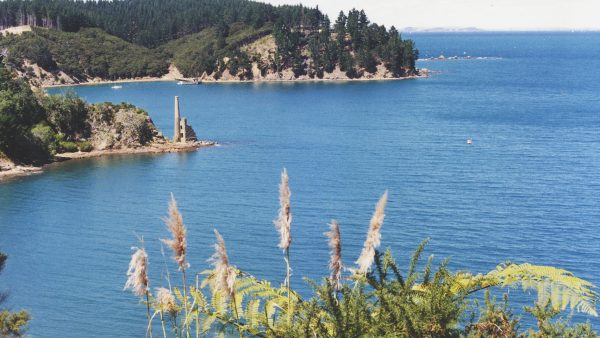Okupu Native Plants Thrive in Battle Against Kikuyu. Photo / AGBILB
More than 150 native plants are flourishing in Okupu, Great Barrier Island, following a pioneering approach to combating the invasive kikuyu grass.
Funded by a $25,000 grant from the Aotea / Great Barrier Local Board, the Okupu Beach Reserve stream restoration project has adopted a novel, herbicide-free method to manage this aggressive weed, known for its capacity to overrun native vegetation by spreading in long, smothering reeds.
Kikuyu grass, which rapidly dominates other plants by starving them of light and nutrients, met its match as heavy-duty black plastic was deployed over the affected areas for several months. This strategy effectively killed the kikuyu by blocking sunlight. Subsequently, biodegradable jute matting was placed prior to planting, slowing the resurgence of kikuyu and other weeds.
“We’re grateful that this riparian planting project has been able to go ahead as a community-led project,” stated Izzy Fordham, local board chair. “It’s exciting to see a spray-free method of weed control working well at the reserve.”
The reserve now hosts a vibrant array of young native plants, including harakeke (flax), tī kōuka (cabbage tree), kawakawa, karo, and karaka. Additionally, raupō (bullrush) was transplanted from the north of the island and is thriving along the boardwalk.
George Wilson from Envirokiwi, the on-island contractors overseeing the project, detailed the weed control strategy. “The jute matting degrades within a year or two,” he explained. “By the time it degrades, the new vegetation will be big enough to outgrow and shade out the kikuyu.”
Local volunteers have played a crucial role in the project’s success, diligently weeding kikuyu from around the edges of the matting. Their efforts, combined with favorable soil and moisture conditions, have boosted the survival and growth of the native plants.
Fordham says the project not only revitalizes the local ecosystem but also serves as a testament to the community’s commitment to sustainable environmental practices.







